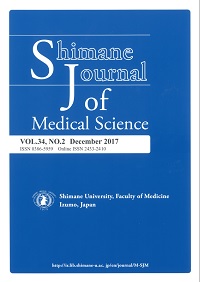Shimane University Faculty of Medicine
ISSN :0386-5959(in print)
ISSN :2433-2410(online)


These article are licensed under a Creative Commons Attribution-NonCommercial-NoDerivatives 4.0 International License.
number of downloads : ?
Use this link to cite this item : https://ir.lib.shimane-u.ac.jp/34622
Shimane Journal of Medical Science 10 2
1986-12-01 発行
Aseptic Endoscopy : Application of Newly Developed Endoscope Washer System
Fukumoto, Shiro
Amano, Yuji
Fukuda, Ryo
Adachi, Kyoichi
Gobara, Yoshiyuki
Ashizawa, Nobuo
Yoshida, Hiroshi
Watanabe, Makoto
Shimada, Yoshihiro
File
Description
The effect of disinfection on a flexible fiberoptic endoscope with 2% glutaraldehyde solution was compared with disinfection by watery wash alone. The number of bacteria in the biopsy channel decreased from 10^4-10^5 to 10^2-10^3 CFU/ml immediately after watery wash alone. The number, however, increased to 10^5-10^6 CFU/ml after storage in the endoscope cabinet for 3-4 days. The increase in the number of bacteria was caused by proliferation of bacteria such as Pseudomonas aeruginosa, Klebsiella pneumoniae and Proteus mirabilis. The use of these contaminated endoscopes for patients with leukemia or for long term administration of corticosteroid hormone or anticancerous agents was, therefore, concluded to be unsuitable. On the other hand, disinfection with 2% glutaraldehyde solution kept the number of bacteria zero even after storage in the endoscope cabinet for 3-4 days. Endoscope models with perfect waterproof (OLYMPUS OES series) and total immersion endoscope washer have been developed, and total immersion disinfection has made possible. This method of disinfection was easier to operate and more effective than that of conventional disinfection methods, because immersion of the whole endoscope including the operating part became possible.
About This Article
Other Article
PP. 85 - 89
